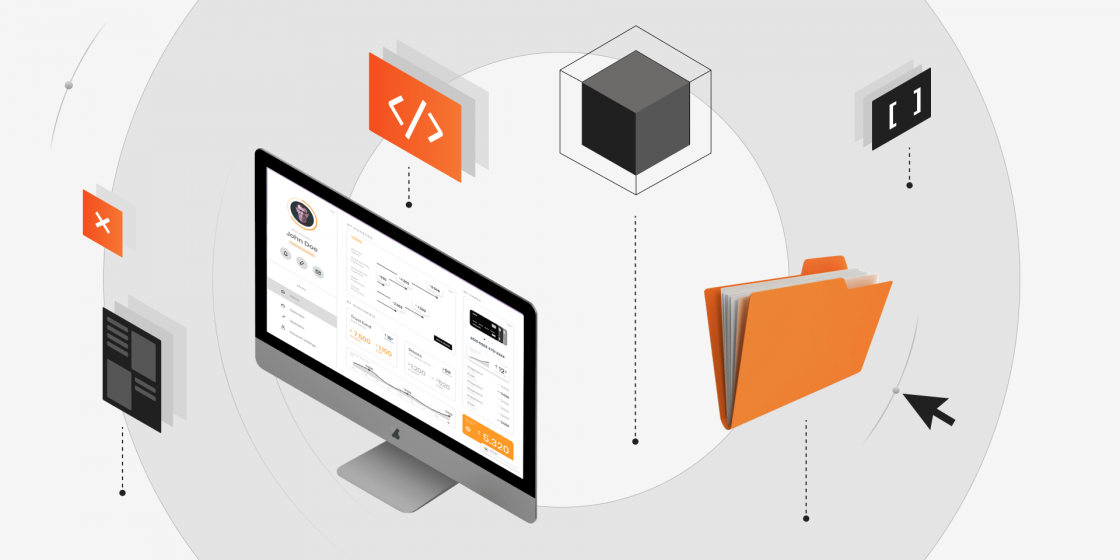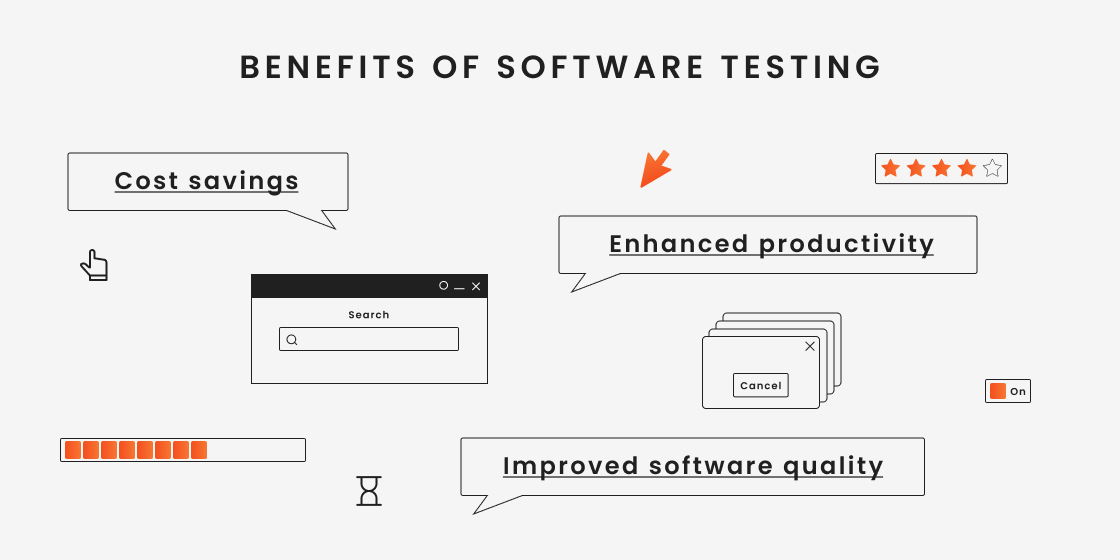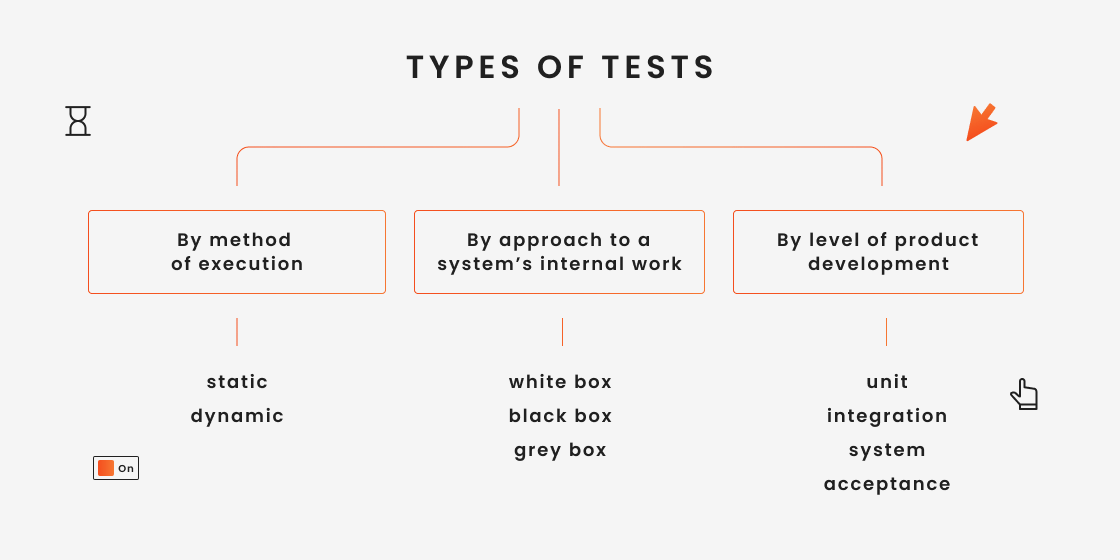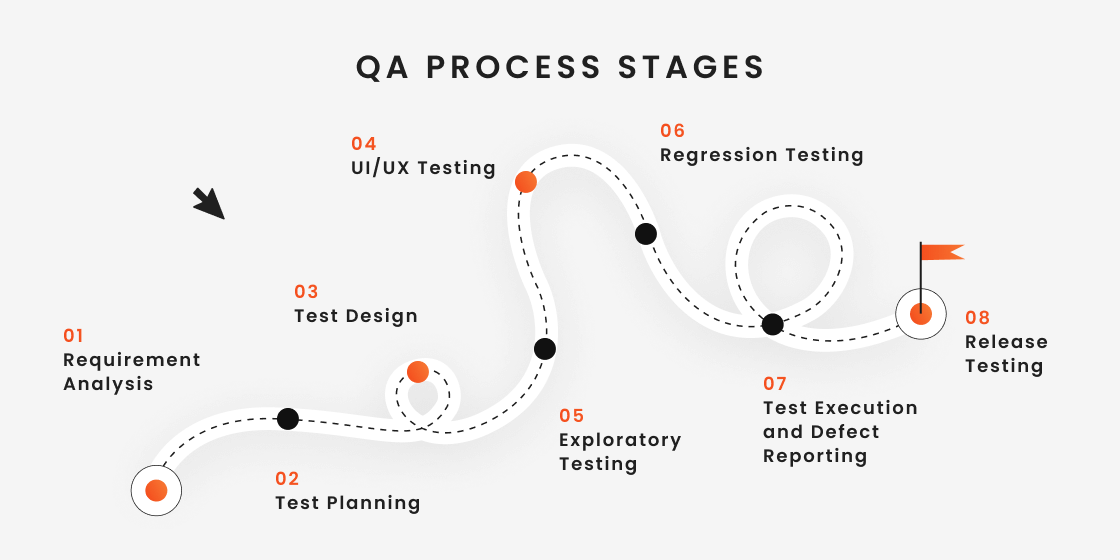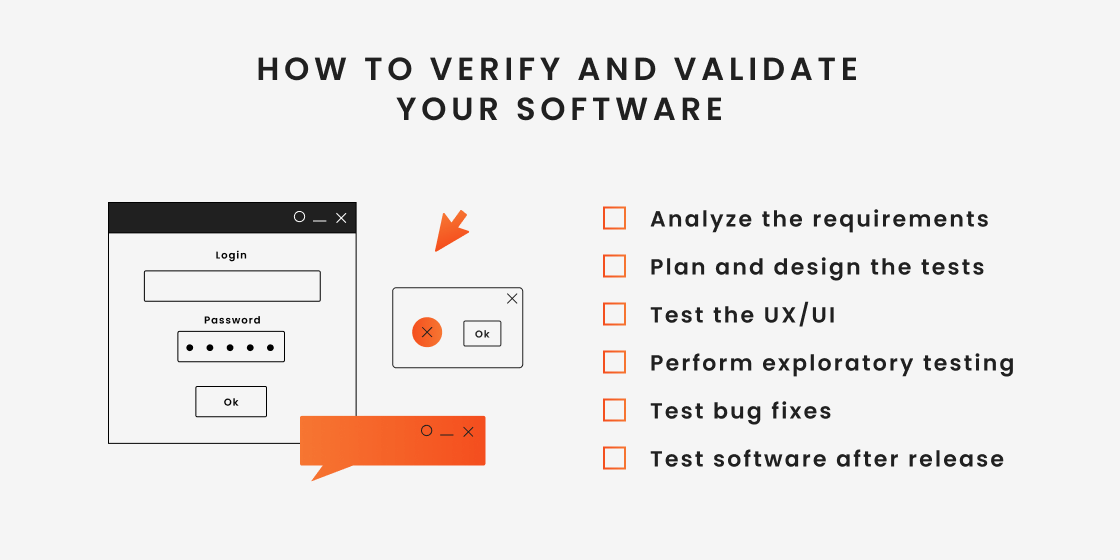So, what are the benefits of quality assurance? There are many, but let’s single out just a few of the key points:
- Cost savings. QA makes the development process more cost-effective. By testing each component of the software before deploying it, testing reduces the expenses of correcting the bugs that are discovered later, where they have a more drastic impact on the software performance.
- Improved software quality. Testing ensures the ability to deliver quality software to your clients consistently. High-quality software plays a key role in building a positive brand image and attracting more customers.
- Enhanced productivity. Test-driven development often results in better understanding and familiarity with product requirements, leading to enhanced productivity with the development teams.
With strong arguments in mind, let’s discuss the different types of tests involved in the QA process. They will help you understand how these tests are completed, which aspects of the solution different stages of the QA process in software testing are responsible for, and which part of your project they support.
What Are the Different Testing Types?
Quality assurance and testing can be categorized in many different ways according to several criteria, such as the approach, method used, or level of tests performed.
When software testing is categorized by approach, the focus is on whether it is carried out with the knowledge of a system’s inner workings. When categorized by method, the focus is on how the testing is actually performed.
In this section, we’ll take a closer look at the different types of software testing by category, methodology, and approach. First, let’s outline the main categories of QA testing types.
Main Categories of Tests
There are two main categories of tests depending on who or what performs the actual tests.
Manual Testing
Companies manually test software to ensure that the existing features meet requirements by working through test cases manually, without the aid of automated tools. While manual testing can become expensive in the long run, it’s usually cheaper at the outset since you can avoid the costs of automation tools. It’s often used for examining the user interface and other tests that require human intervention.
Automation Testing
Automation testing involves the use of tools or scripts to verify the quality of the software being tested. It is ideal for regression testing, which involves repeatedly checking the software after modification to identify newly introduced defects. It’s also better suited for load and performance testing.
Automation is often used in conjunction with manual testing, which means that automation QAs also need manual testing skills in addition to the knowledge of automation techniques. While the initial investment is higher with automated tools, it will be less expensive and more efficient than manual in the long run.
Types of Software Testing by Method
Software testing may be broken down into two categories according to the method they use. The major difference between them is whether or not the software is running during the test.
Static Testing
Static testing, or verification, is a method that involves checking files and documents to verify requirements are being met without executing the software. It involves activities such as code inspections, technical reviews, and walk-throughs.
This type is often used in the early stages of the development process to identify and rectify bugs quickly. It can be carried out manually or with the aid of automation.
Dynamic Testing
Dynamic testing, or validation, is a technique that involves executing a product to evaluate its behavior with dynamic variables. It ensures the software works consistently without any major defects.
Oftentimes, dynamic testing helps discover defects that cannot be found through static testing. It’s also essential for detecting and fixing critical issues, such as security loopholes.
Types of Software Testing by Approach
By approach, there are three types of QA testing based on a QA expert’s involvement in the code and knowledge of a system’s internals.
White Box Testing
White box testing, also known as glass box, clear box, and code-based testing, is an approach in the QA testing process that involves examining a product based on the knowledge of a system’s inner workings.
White box testing involves verifying the flow of specific inputs through the program to ensure the software works properly. It requires an understanding of the source code and programming skills.
Though white box testing can be complex and time-consuming, it often results in highly optimized code with minimal errors. Unlike most other types of QA testing, the white box can also be performed during early development before user interfaces are developed.
Black Box Testing
Black box testing, also known as behavioral or specification-based testing, involves checking software without knowing the internal design and structure of the code.
Black box testing is based on specifications and requirements and verifies that the software produces the expected outputs from different cases. Unlike white box testing, this approach does not require the QA specialist to have programming skills.
Black box testing can be subdivided into:
- Functional – focuses on ensuring that the software’s functionality matches the specified requirements.
- Non-functional – focuses on requirements such as usability, scalability, and performance of the software.
Gray Box Testing
Gray box testing is a combination of the white box and black box approaches. In this approach, QA specialists are partially aware of the inner workings of the software and have access to documentation of the algorithms and data structures implemented.
Gray box testing is often used for complete testing since it improves the overall quality of the software product by leveraging the input of both developers and QAs and allowing the latter to create more intelligent test cases.
Types of Software Testing by Level
By level of product development, we can pinpoint four QA testing types:
Unit Testing
Unit testing is the lowest level and involves verifying individual units of software. A unit is the smallest component of software that can be tested independently; this verifies that each individual unit is functioning properly.
Unit testing is usually performed by the developers using automated tools. Writing unit tests makes it easier to find and fix fundamental issues quickly, thus improving the overall quality of the codebase.
Integration Testing
Integration testing is the next level. It involves checking the flow of data between the different modules or groups of components in the application. It helps ensure that the interactions between the integrated units are error-free.
Integrated testing can be performed by developers or QA specialists and often involves manual and automated tests. They help secure interface defects, so they don’t escape to higher testing levels.
